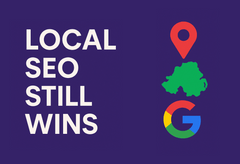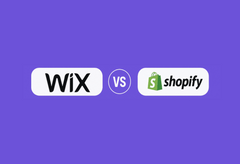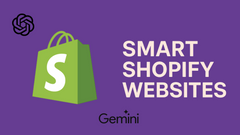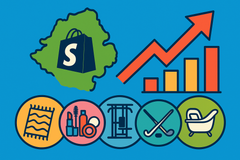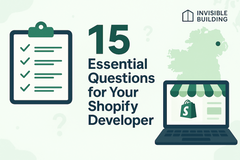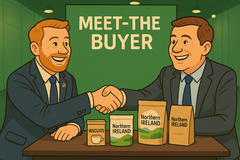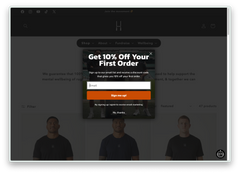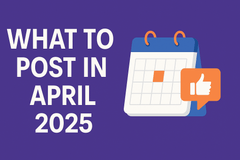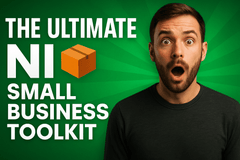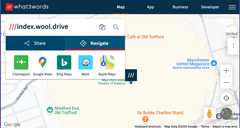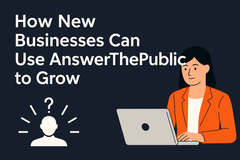10 Shopify Design Patterns Every NI, Irish & UK Business Should Steal in 2026
Discover innovative strategies to stand out in the competitive e-commerce landscape of 2025.
Published on November 20, 202510 High-Converting Shopify Design Patterns for NI Stores (2026 Edition)
If you run a Shopify store in Northern Ireland, you’ve probably felt this frustration before:
“We get the traffic. Why aren’t more people buying?”
Here’s the truth: Most stores aren’t struggling because of their product or their traffic source. They’re struggling because their design patterns are 3–5 years out of date.
Many local sites still rely on cluttered layouts, aggressive pop-ups, or generic templates that fail to build trust with international or even local buyers. At Invisible Building, we don’t design for aesthetics alone. We design for revenue.
We’ve analysed real user sessions across Belfast, Dublin, and the wider UK to find what actually works in our unique market. Here are the 10 UX patterns every NI Shopify brand should be stealing in 2026.
⚡ Quick Summary for NI Founders:
Stop focusing on abstract "branding." Focus on clarity, speed, and trust. The 10 patterns below are designed to specifically reduce bounce rates and increase trust for UK & Irish shoppers.
The Cheat Sheet:
 Fig 1. A quick overview of the 10 patterns we use in client builds.
Fig 1. A quick overview of the 10 patterns we use in client builds.
1. The “Hero That Sells, Not Tells” Pattern
Your homepage hero section is the most valuable real estate on your entire website. Yet, too many businesses waste it on abstract slogans like "Passion for Quality" or massive image sliders that slow down the page.
In 2026, customers don’t want poetry. They want clarity. Within 50 milliseconds, your hero must answer three questions:
- What do you sell?
- Who is it for?
- Why should they care?
The Winning Structure:
Stop using rotating sliders. Instead, use a static, high-impact layout with a clear headline, a one-sentence value proposition, and one single Call to Action (CTA). Don't split their attention between "Read our Blog" and "Shop Now." Focus entirely on the sale.
 Fig 2. Clear headline + Value Prop + Single CTA = Conversion.
Fig 2. Clear headline + Value Prop + Single CTA = Conversion.
2. Story-Based Product Pages
Specs tell, but stories sell. The old Shopify template (Title → Price → Description) kills conversion because it forces the user to do the mental work of imagining the product in their life.
The highest-converting NI stores are now treating product pages like landing pages. Instead of a dry bullet list of materials, they weave the features into a narrative.
Modern Product Page Structure:
- Meaningful headline: Hook them immediately with a benefit, not just the product name.
- The transformation: Describe how life gets easier or better after the purchase.
- Unique advantage: Why should they buy from you instead of Amazon?
- Proof: Use reviews & press logos to validate the claim.
- Lifestyle gallery: Show the product in use, not just on a white background.
 Fig 3. Don't just list specs. Tell a transformation story.
Fig 3. Don't just list specs. Tell a transformation story.
3. The “Three Reasons to Trust Us” Strip
This is a quick-win UX pattern that we see on almost every high-performing local site. It is usually placed right under the hero section or immediately above the footer.
For Northern Ireland businesses selling into the UK or ROI, "Border Anxiety" is real. Customers worry about customs, currency, and slow shipping. You need to address this immediately.
- Free NI, UK & ROI Delivery
- NI-Based Support Team
- Hassle-Free Returns
 Fig 4. Visual icons work faster than text to build trust.
Fig 4. Visual icons work faster than text to build trust.
4. The 3-Click Checkout Journey
Friction destroys profit. Every time you ask a user to click, load a new page, or fill in a form field, you lose a percentage of your sales.
We are seeing a massive shift toward specific "Express Checkout" buttons (Shop Pay, Apple Pay, PayPal) being prominent not just in the cart, but directly on the product page. If a customer has to click more than three times to go from "Product Page" to "Order Confirmed," you are leaving money on the table.
 Fig 5. The perfect linear flow: No dead ends, no distractions.
Fig 5. The perfect linear flow: No dead ends, no distractions.
5. Sticky Add-to-Cart (Clean, Not Spammy)
When a user is on their phone scrolling down your detailed, story-driven product description, the "Add to Cart" button usually disappears off the top of the screen. If they decide to buy, they have to scroll all the way back up. That is friction.
The solution is a Sticky Add-to-Cart bar that anchors to the bottom of the mobile screen. However, it must be designed well. Avoid aggressive, flashing colours. A clean, white or soft grey bar with a clear button and a tiny trust badge works best. It ensures the primary call to action is always within the "thumb zone."
6. The “Smart Mega Menu” for Large Catalogues
If you have a large SKU count, a standard dropdown menu is a conversion killer. A long list of text links overwhelms the user, leading to "Decision Paralysis."
The "Smart Mega Menu" uses imagery and hierarchy to guide the user. Instead of just text, use thumbnail images for your top collections within the menu itself. You should also include a "New Arrivals" block with a product image directly in the navigation. This allows users to "window shop" before they even click a link.
7. Bundles That Increase AOV Instantly
With ad costs rising, the most effective way to increase profit is by increasing your Average Order Value (AOV). But don’t just rely on the customer to browse and pick three items themselves.
Design the bundle for them.
- Build-Your-Own Boxes: Let them mix and match flavours or styles.
- Quantity Breaks: "Buy 2, Save 10%" is a classic for a reason—the math is simple.
- The 'Starter Kit': Combine a best-seller with necessary accessories.
8. Social Proof That Doesn’t Feel Cringe
Stock reviews are out. Authentic User Generated Content (UGC) is in.
In 2026, a generic 5-star graphic means very little. Customers are skeptical. They want to see real people using the product. The best-performing stores are using layout blocks that feature real Instagram/TikTok photos from customers, with the review text overlaid. Seeing a real person in Belfast or Dublin holding the product validates it instantly.
 Fig 6. Real photos from real local customers beat generic star ratings.
Fig 6. Real photos from real local customers beat generic star ratings.
9. The TikTok-Optimised Product Page
Shopping behaviours are changing. Gen Z and younger millennials are accustomed to vertical video and constant motion. Static image galleries are starting to feel outdated.
The winning pattern is integrating short-form, vertical video (Reels/TikTok style) directly into the product image carousel. Don't force them to click a YouTube link. Have the video auto-play (muted) showing the fabric moving, the food steaming, or the gadget in action. Motion builds trust faster than text ever can.
 Fig 7. Integrating vertical video into the image gallery.
Fig 7. Integrating vertical video into the image gallery.
10. The 2026 “NI Shopify Look”
There is a distinctive aesthetic emerging among top-performing Belfast and NI brands. It breaks away from the cluttered, "shouty" style of dropshipping sites often seen across the Atlantic.
The look is Cleaner, Calmer, and Confident. It relies on generous whitespace, typography that breathes, and high-fidelity local photography. This "quiet luxury" approach signals to the customer that there is a real business, with real people, standing behind the URL.
 Fig 8. Clean layouts signal confidence and build trust.
Fig 8. Clean layouts signal confidence and build trust.
📈 Final Thought — Good UX Pays for Itself
These patterns aren’t just theory. They are the exact patterns we use at Invisible Building to help NI brands convert better, sell more, and look world-class.
The question is: Which of these should your store implement next?
Want me to review your store?
I offer a comprehensive Shopify UX Review for £150.
You get a 12–18 page report detailing specific fixes, conversion opportunities, and recommended design patterns tailored to your brand.


